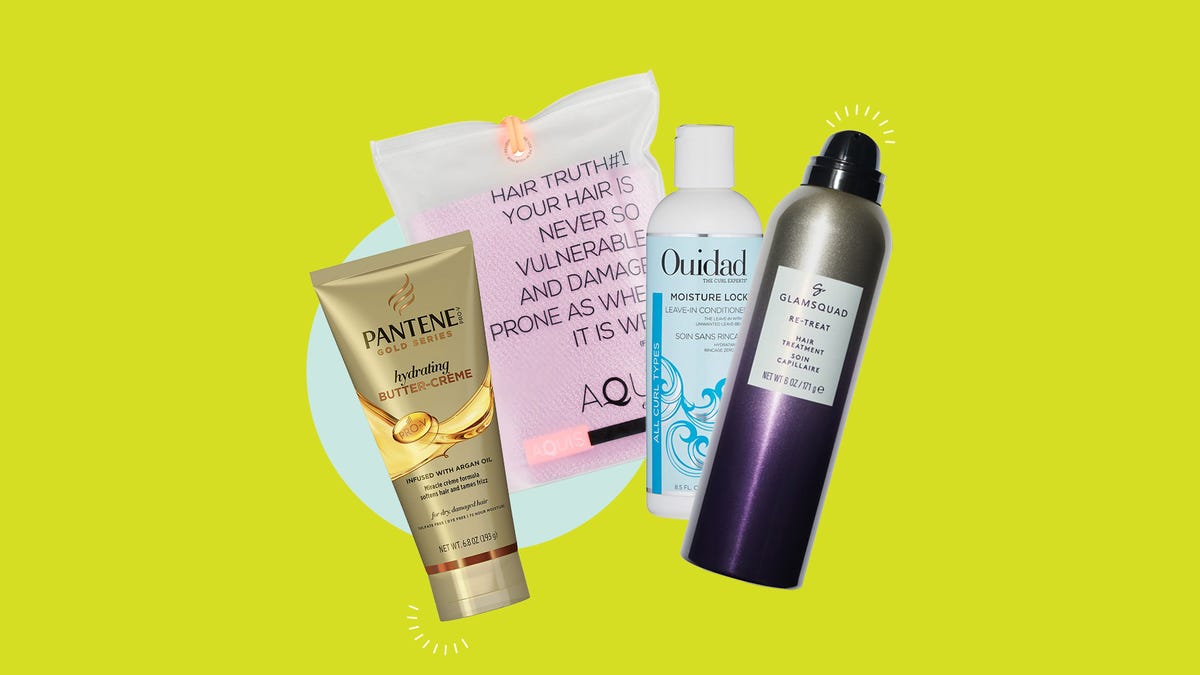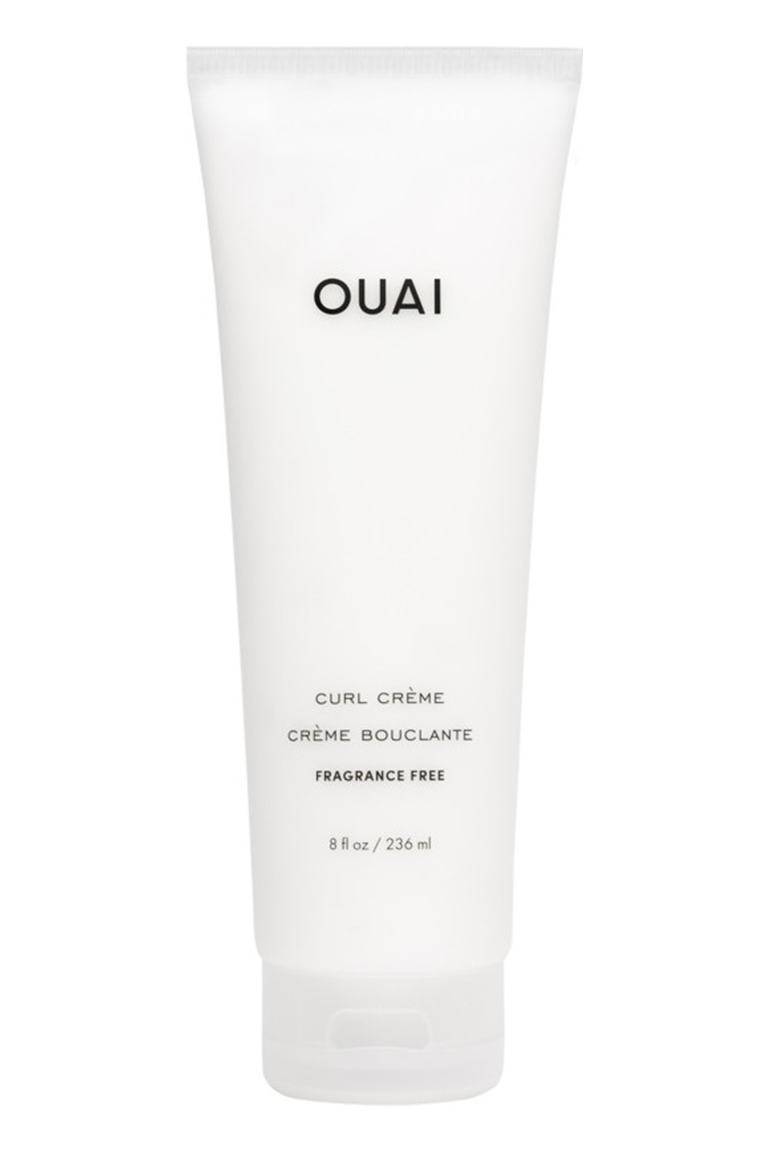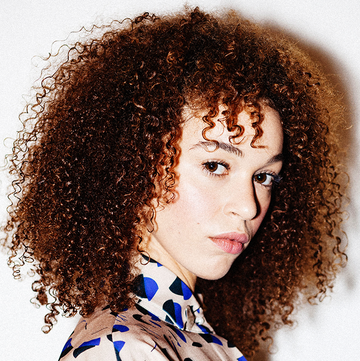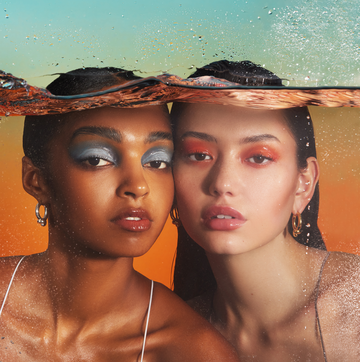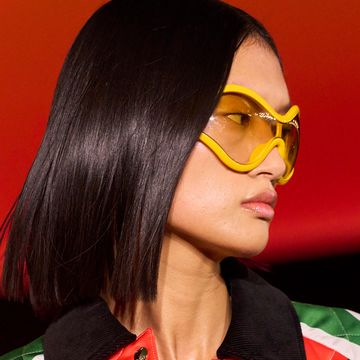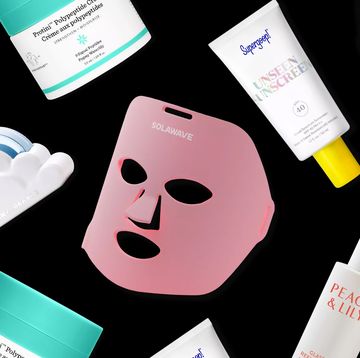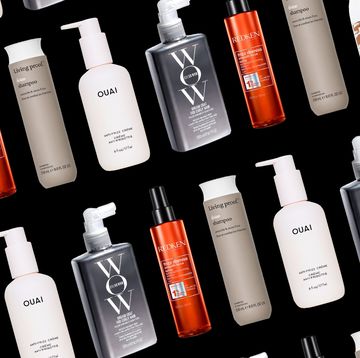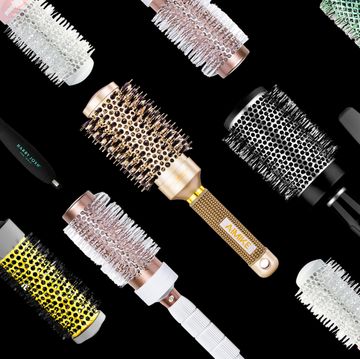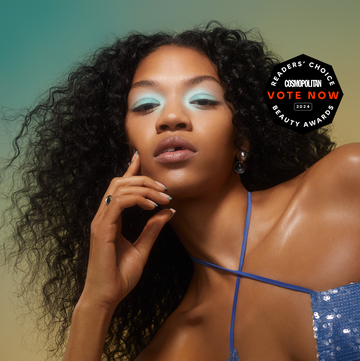Not gonna lie—I really, truly thought that at this point in my life, after a decade of obsessively trying every single curly hair product and reading every curly hair hack, that I had officially become an old, tired, withered expert who could retire into the wind, 3a hair a'blowing. Aaaand then I heard about a thing called hair porosity (i.e., how well your hair absorbs or repels ingredients) and it completely transformed my curls. No exaggeration.
Like, before learning about my hair's porosity (and finally using the correct products for my hair type), I thought my curls were...fine. I was content with them. They had their bad days and good days, they were relatively consistent, and their ~problem areas~ were just something I learned to live with. But I was wrong. I discovered that my fine, thin curls were not, as I thought, "naturally" flat, or perpetually frizzy, or easily greasy—I had just been using all the wrong products for my hair porosity for years.
Like most curly-haired folks, I had based my entire routine around my curl type (3a! Loose curls! Fine!), rather than on my curl's structure. But, as it turns out, my 3a hair might need a totally different set of products than someone else's 3a hair, just like your 4b hair might need completely separate treatments from your best friend's 4b hair. And once I switched up my routine, my curls were suddenly...better. Fuller. Less greasy and frizzy.
Basically, instead of my curls being just "fine," they are officially thriving. And now, I've made it my new life's mission—before I can retire into the wind, obvs—to help anyone with curls or coils figure out their porosity ASAP, so they too can get on my level of happiness. And all of that starts with...
What is hair porosity?
Hair porosity is your hair’s ability to absorb and retain hydration, says Mezei Jefferson, assistant vice president of education at L’Oréal USA. Even though a strand of hair may look like a smooth tube, it's actually made up of microscopic, flexible layers called cuticles that work like a protective seal to decide how much moisture and oil can penetrate the hair strand. It's basically the gate-keeper for your hair strand.
What does hair porosity mean?
Your curls needs moisture, oils, and proteins to stay healthy and happy. It's a delicate balance, and too much of a good thing (even water!) can leave your strands dried-out, weighed down, or damaged. That's where your hair cuticle comes in: Its entire purpose is to keep the peace, opening up to allow some ingredients to absorb or evaporate, and closing down to keep some inside.
But—but!—sometimes, through either genetics or damage, your cuticles don't adhere to the rules of "normal" porosity. Instead, your cuticles may be really tight and close together, making it harder for your hair to absorb moisture. We call this one "low porosity," because your hair is less porous. On the flip side, your cuticles may be widely spread out and open, making it easy for moisture to flow out of your hair. We call this one "high porosity," because your hair is highly porous.
Confused? Here's the cheat sheet:
Porosity types:
- Low porosity: Your hair cuticles are close together (think: a sponge with no holes), so they essentially repel moisture and oils, making it harder to hydrate your curls, while also leaving them easily weighed down.
- Medium/"normal" porosity: Your hair cuticles are spaced "normally" and let moisture pass and absorb without issues (think: a classic sponge).
- High porosity: Your hair cuticles are raised and open (think: a sponge that's all holes), so they lose moisture fast, leaving your curls dry, fuzzy, and prone to breakage.
So my curls, for example, were always weighed down, easily greasy, and perpetually dry/frizzy, no matter how many hair masks I used. I later discovered that I have low-porosity hair, and the reason it was both greasy and dry was because I was dealing with product build-up from using too-heavy formulas. Once I switched to the right products, my curls returned to their bouncy, healthy, hydrated state.
So how can you tell your hair porosity type? Welp, your journey is probably going to start with something called...
The hair porosity float test
If you've spent even a second Googling hair porosity, you'll have seen that the "easiest" way to test your hair porosity is by using a cup of water and a single strand of hair to see if it floats (low porosity) or sinks (high porosity). But I'm about to say something super controversial: the hair porosity water test does not work. Like, at all.
Why? Well, a number of reasons, starting with the fact that your hair naturally has a layer of lipids (oil) on it, aaand oil repels water, aaand thus, we're already off to a scientifically bad start. If you want to know all the other reasons why the test is totally inaccurate, I highly recommend reading this explanation from chemist Lorna Casse, or this breakdown from The Natural Haven. Or, just listen to vlogger Iyda Michael's quick take:
So how do you know your hair porosity?
If you don’t have a microscope and a medical degree on hand, your best bet at figuring out your hair’s porosity is with my favorite quiz, the Curls Bot porosity quiz (I didn't create this; I just love it). Try taking the quiz, then come back here for more info on each of the porosity types, which I've ~lovingly~ broken down for you below:
➰ Low-porosity hair
The gist: Your cuticles are super close together and tight on the hair shaft, which prevents water and moisturizer from penetrating your hair easily. So you’ve probably noticed that:
- products tend to sit on top of your curls and either weigh them down or leave them with buildup.
- your curls tend to look limp and have little volume.
- it takes your curls hours—maybe even all day—to completely air-dry.
- your hair takes some time to get fully saturated in the shower (think, 10+ seconds). Unsure if that's you? Next time you take a shower, hold your hand under your hair at the nape of your neck and see how long it takes to get fully soaked.
➰ Medium/“normal”-porosity hair
The gist: Your hair cuticles are averagely spaced and easily allow hydration in and out, which means that:
- your curls tend to be healthy, shiny, and voluminous without requiring a ton of product (note: This doesn't mean they automatically look "perfect" without any product—we all know that's impossible—but that they're just not in a constant state of crisis either).
- your hair doesn’t get fluffy or visibly dried out by the end of the day.
- your curls are pretty easy to style—they don’t get greasy too easily or dry too easily.
➰ High-porosity hair
The gist: Your hair cuticle is perpetually open and lifted, so it absorbs moisture easily, but it also loses that moisture super fast. High-porosity hair is often genetic, but it's also commonly caused by damage via color or chemical treatments. Here's what it looks like:
- your hair usually looks dull and feels dry after a few hours, no matter what products you use.
- your curls are extra prone to tangles, knots, and breakage.
- your hair can soak up tons of oils and conditioners without getting weighed down or greasy.
- frizz is the basic M.O. of your hair, regardless of what products you layer on.
What causes high-porosity hair?
In most cases, porosity is genetic, but it can also be affected—and completely altered by external factors. “Daily heat styling, pool water, pH imbalances, chemical and color treatments, and overexposure to the sun can all cause high porosity,” says curly-hair guru Verna Meachum, since these factors "strip" and damage the cuticle, leaving it open and porous.
What causes low-porosity hair?
True low-porosity hair is always genetic, but sometimes your hair can seem like it's low-porosity, when in reality, it's just dealing with some massive product buildup. Silicones, heavy oils, and rich butters can create a moisture-repelling barrier on your strands, leading you to believe you have low-porosity hair when you might, in fact, you might not.
Can you change your hair’s porosity?
Yes and no. If product buildup is secretly causing your low-porosity hair, washing with a clarifying shampoo can bring your hair back to its natural medium porosity. But if your porosity has been caused by damage or genetics, there’s not much you can do to change it, says Jefferson. But don’t freak—no matter what type of hair you have, it is neither good nor bad. It’s all about how you choose to take care of it. Which brings us to...
The best routine for your porosity type
Yep, there’s a routine for everything when it comes to curly hair. Thankfully, all these curl products and tools should overlap with your usual routine (no majorly surprising products here), so this shouldn’t be too painful of a change.
How to care for low-porosity hair
Because the cuticles of low-porosity hair are so tightly closed, products tend to build up on strands rather than fully absorb into them. And all that residue from your shampoos, conditioners, and stylers then creates a barrier that prevents water from getting into your hair, leading to dryness.
So with low-porosity hair, your main goals are to infuse your strands with moisture while avoiding anything that can cause even more product buildup. How? Use lightweight formulas, a weekly clarifying shampoo to remove residue, and hair-steaming treatments to help open up those tight cuticles and allow moisture to enter.
How to care for medium-porosity hair
Those with medium-porosity hair have no real restrictions (lucky you). But to get the best, healthiest curls, you should focus on maintaining a balanced ratio of daily moisturizers (like creams and mild cleansers) to bi-weekly hair-strengtheners (like protein-filled masks). And go easy on the heat treatments and coloring, or you’ll shift your hair into the high-porosity category.
How to care for high-porosity hair
Highly porous hair absorbs a ton of water when wet, but basically loses it all as it dries, leaving it perpetually dry, weak, and prone to damage. So your routine should be geared toward ultra-moisturizing conditioners and hair oils (to moisturize), protein-packed deep conditioners (to strengthen the damaged cuticle), and, if you want curl definition, a hair gel or styler (to lock in all the moisture).
Boom—easy, right? You may now go forth with your new, bouncy, perfectly compliant curls and never have a bad hair day again. Hopefully.

Chloe Metzger is the deputy beauty director at Cosmopolitan, overseeing the editorial content and growth strategy of the hair, makeup, and skin space on digital, while also obsessively writing about the best hair products for every hair type (curly girl here; whattup), and the skincare routines that really, truly work (follow her on Instagram to see behind-the-scenes pics of that magazine life). She brings nearly a decade of writing and editing expertise, and her work has appeared in Allure, Health, Fitness, Marie Claire, StyleCaster, and Parents. She also has an unhealthy adoration for Tom Hanks and would like to please meet him one day, if you could arrange that. Thanks.

Isabel is a full-time freelance writer covering all things lifestyle, sex, and wellness. She is very obviously a bisexual Gemini and lives in Seattle with her fiancé and 3 cats. Her work has been featured in Cosmopolitan, Marie Claire, Yahoo, CNN, and more. She is also the founder and CEO of Rumination Storytellers, a creative brand marketing agency. Follow her on Instagram.

